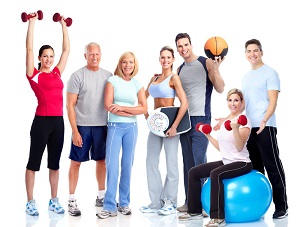
Try some of these fitness trends for 2015.
- Body weight training. With tight budgets, body weight training can be the way to go. Because it does not require a lot of equipment, body weight training can be an inexpensive way to whip yourself into shape.
- High-intensity interval training. A workout that calls for short bursts of high-intensity exercise followed by a short recovery time. It is very efficient in burning calories and building muscles.
- Strength training. Strength training includes body weight, resistance tubing, free weights and weight machines. Everyone can benefit from building stronger muscles and bones while controlling their weight and increasing their energy levels.
- Personal training. A personal trainer will help design a custom fit plan tailored to your wants and needs as well as being your personal cheering section when you achieve your steps and goals.
- Exercise and weight loss. Joining programs that combine exercise and weight loss might be a good option for you if you are trying to lose inches off your waist as well as tone your body. Look for programs that emphasize the important balance between healthy eating and exercise.
- Yoga. Yoga continues to be a favorite in the fitness community. There are so many different options to try with all the different versions available.
- Group Personal Training. Training two or three people at the same time in a small group is becoming a more popular solution when looking for more individualized attention then you get in a class, but without the higher cost of one on one session with a personal trainer.
- Outdoor activities. Getting outside for some exercise will bring more benefits. Get outside for hiking, skiing, running, skating, the possibilities are endless.
- Circuit training. A group of 6 to 10 exercises that are completed in a sequence is circuit training. It is similar to high-intensity training, but is performed at a lower level of intensity.
- Core training. This type of training focuses on strengthening the muscles of the abdomen, thorax, and back by exercising the hips, lower back, and abdomen. You can use equipment such as exercise balls, BOSU balls, wobble boards, and foam rollers.
- Boot camp. More and more men and women are favoring this military style training that will include cardiovascular, strength, endurance and flexibility drills. This is great if you like intense, highly-structured workouts.
Try all or some of these 2015 fitness trends to get you on your exercise goals for the New Year. You can even refer back to this list as the year goes on to try something new when you feel you need to change things up to keep you motivated. Happy New Year!
For more articles go to http://lifesportfitness.lifestyleezine.com

 The Foam Roller can be a life saver when it comes to stretching and helping with minor injuries. Rolling your body over foam cylinders can improve flexibility, reduce post-workout soreness, prevent sports injuries and even alleviate chronic pain.The foam roller is a great tool for lengthening and elongating muscles and is especially helpful for runners who often suffer from tight and fatigued muscles. The foam roller will also massage the muscles intensely, similar to what a massage therapist will do without the cost to visit one.
The Foam Roller can be a life saver when it comes to stretching and helping with minor injuries. Rolling your body over foam cylinders can improve flexibility, reduce post-workout soreness, prevent sports injuries and even alleviate chronic pain.The foam roller is a great tool for lengthening and elongating muscles and is especially helpful for runners who often suffer from tight and fatigued muscles. The foam roller will also massage the muscles intensely, similar to what a massage therapist will do without the cost to visit one. Sitting all day at a desk can ruin what you’ve worked so hard for at the gym. What can you do to keep fit and healthy at work? There are many ways to exercise while working at your desk in the office each day. Don’t let your hard work go down the drain.
Sitting all day at a desk can ruin what you’ve worked so hard for at the gym. What can you do to keep fit and healthy at work? There are many ways to exercise while working at your desk in the office each day. Don’t let your hard work go down the drain.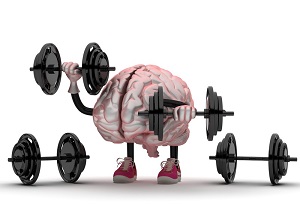 Exercise is not only important for a healthy body, but also for a healthy mind.The incidence of getting Alzheimer’s Disease is about 4% at the age of 65 and increases to 50% at the age of 85. Some believe that everyone has Alzheimer’s Disease and it’s just a question of the degree. We have a blood-brain barrier that is intact when we are healthy. Its purpose is to contain things in our blood. When those vessels travel through the brain, they make sure that nothing leaks out into the brain that shouldn’t. As we get older, we experience aging associated changes in our blood vessels, including the integrity of the blood-brain barrier. You begin to spring leaks in your brain, and they wreak havoc on the ability of the brain to function. It is found that those with Alzheimer’s Disease have a material called amyloid that characteristically accumulates in their brains. Amyloid is found all over your body but not in your brain. When your brain-blood barrier breaks down, amyloid now begins to flood out in the brain. The accumulation of amyloid is one of the hallmark characteristics of the disease.
Exercise is not only important for a healthy body, but also for a healthy mind.The incidence of getting Alzheimer’s Disease is about 4% at the age of 65 and increases to 50% at the age of 85. Some believe that everyone has Alzheimer’s Disease and it’s just a question of the degree. We have a blood-brain barrier that is intact when we are healthy. Its purpose is to contain things in our blood. When those vessels travel through the brain, they make sure that nothing leaks out into the brain that shouldn’t. As we get older, we experience aging associated changes in our blood vessels, including the integrity of the blood-brain barrier. You begin to spring leaks in your brain, and they wreak havoc on the ability of the brain to function. It is found that those with Alzheimer’s Disease have a material called amyloid that characteristically accumulates in their brains. Amyloid is found all over your body but not in your brain. When your brain-blood barrier breaks down, amyloid now begins to flood out in the brain. The accumulation of amyloid is one of the hallmark characteristics of the disease.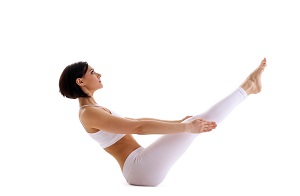 You may already have a well developed training schedule that includes weight training, cardio/aerobic exercise and resistance training, but have you thought of adding some yoga. Because of its perceived gentle nature, yoga is often overlooked as an extremely effective complement to a regular exercise routine. Adding a little bit of yoga to your training/workout routine will offer many benefits. Ultimately, it will help you strengthen and tone your muscles evenly as you work out. The poses and meditation also enhance your flexibility, balance, and contribute to a happier training routine.
You may already have a well developed training schedule that includes weight training, cardio/aerobic exercise and resistance training, but have you thought of adding some yoga. Because of its perceived gentle nature, yoga is often overlooked as an extremely effective complement to a regular exercise routine. Adding a little bit of yoga to your training/workout routine will offer many benefits. Ultimately, it will help you strengthen and tone your muscles evenly as you work out. The poses and meditation also enhance your flexibility, balance, and contribute to a happier training routine. Hiking is a great way to get outside, get some fresh air, enjoy your environment and get in some excellent exercise. It’s an easy, inexpensive addition to your workout at the gym. Find a local Conservation Area, National/State Park, or just a trail in your neighborhood.
Hiking is a great way to get outside, get some fresh air, enjoy your environment and get in some excellent exercise. It’s an easy, inexpensive addition to your workout at the gym. Find a local Conservation Area, National/State Park, or just a trail in your neighborhood. 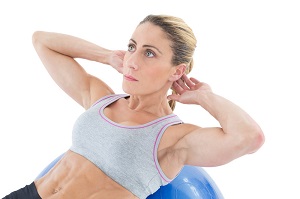 There are many exercises for developing your abs muscle. Crunches are probably one of the most common exercises done to tone up your middle. An effective way to tighten and strengthen your abdominal muscles is to do the traditional abdominal crunch exercises. They are very versatile and convenient because they can be performed basically anywhere whether it is lying flat on the floor, using a weight lifting bench, a Swiss ball or an abdominal exercise machine. It is important you work with your trainer to make sure you have the right balance of exercises to get the best workout, and to make sure you are doing it properly to avoid injury and get the best results.
There are many exercises for developing your abs muscle. Crunches are probably one of the most common exercises done to tone up your middle. An effective way to tighten and strengthen your abdominal muscles is to do the traditional abdominal crunch exercises. They are very versatile and convenient because they can be performed basically anywhere whether it is lying flat on the floor, using a weight lifting bench, a Swiss ball or an abdominal exercise machine. It is important you work with your trainer to make sure you have the right balance of exercises to get the best workout, and to make sure you are doing it properly to avoid injury and get the best results.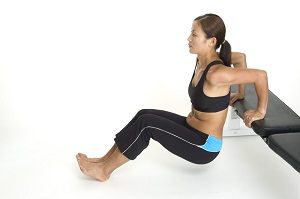 Are you embarrassed by the way your arms look? Do you have that extra piece of skin under your arm that flaps when you wave? The female body is highly vulnerable to sagging because fat is deposited in the female body in three areas; the tummy, buttocks and the back of the arms. It’s time to get a great arm workout to remove that annoying double wave.
Are you embarrassed by the way your arms look? Do you have that extra piece of skin under your arm that flaps when you wave? The female body is highly vulnerable to sagging because fat is deposited in the female body in three areas; the tummy, buttocks and the back of the arms. It’s time to get a great arm workout to remove that annoying double wave. 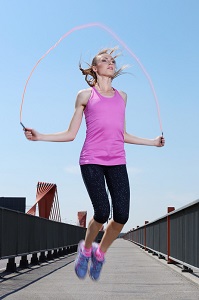 We already know how great aerobic activities are for your heart, body and mind. After all, regular cardio exercise has been shown to reduce body fat, decrease total cholesterol, boost mood, lower resting heart rate, and improve heart and lung function but how can we add to traditional cardio fitness to keep your workouts interesting.Try something fun, something that you wouldn’t really think is a cardio workout. Get your trainer involved too. They will keep your cardio routines fresh so you don’t start dreading it. You may not realize that a lot of the activities you may do around the house, or do with your kids are great cardio workouts.
We already know how great aerobic activities are for your heart, body and mind. After all, regular cardio exercise has been shown to reduce body fat, decrease total cholesterol, boost mood, lower resting heart rate, and improve heart and lung function but how can we add to traditional cardio fitness to keep your workouts interesting.Try something fun, something that you wouldn’t really think is a cardio workout. Get your trainer involved too. They will keep your cardio routines fresh so you don’t start dreading it. You may not realize that a lot of the activities you may do around the house, or do with your kids are great cardio workouts. 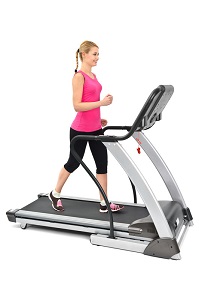 Remember the old adage, too much of anything in life can be a bad thing? Even something as simple as drinking water can be dangerous if you consume excessive levels. Exercise is a really important part of a healthy lifestyle – but make sure you build a healthy addiction to exercise. Exercising regularly is a major component in leading a healthy lifestyle. To get into the habit of exercising on a regular basis, you may need to set aside time in your schedule to visit the gym and find a type of exercise you can genuinely enjoy. At other times, you may have difficulty becoming addicted to exercising if you feel as if you aren’t reaching your goals in terms of fitness or weight loss. This is where a personal trainer can really keep you motivated and keep your enthusiasm and interest in your workout while changing things up and staying on track of your goals. Take a positive approach to exercise and making specific changes to your lifestyle, you can become addicted to exercising and improve your health in the process.
Remember the old adage, too much of anything in life can be a bad thing? Even something as simple as drinking water can be dangerous if you consume excessive levels. Exercise is a really important part of a healthy lifestyle – but make sure you build a healthy addiction to exercise. Exercising regularly is a major component in leading a healthy lifestyle. To get into the habit of exercising on a regular basis, you may need to set aside time in your schedule to visit the gym and find a type of exercise you can genuinely enjoy. At other times, you may have difficulty becoming addicted to exercising if you feel as if you aren’t reaching your goals in terms of fitness or weight loss. This is where a personal trainer can really keep you motivated and keep your enthusiasm and interest in your workout while changing things up and staying on track of your goals. Take a positive approach to exercise and making specific changes to your lifestyle, you can become addicted to exercising and improve your health in the process.